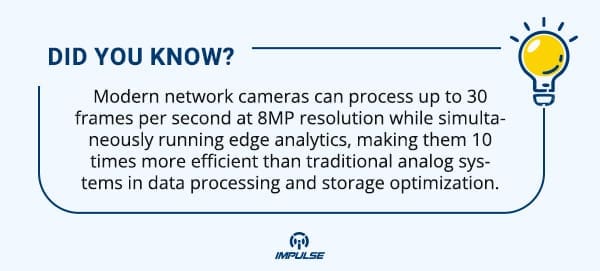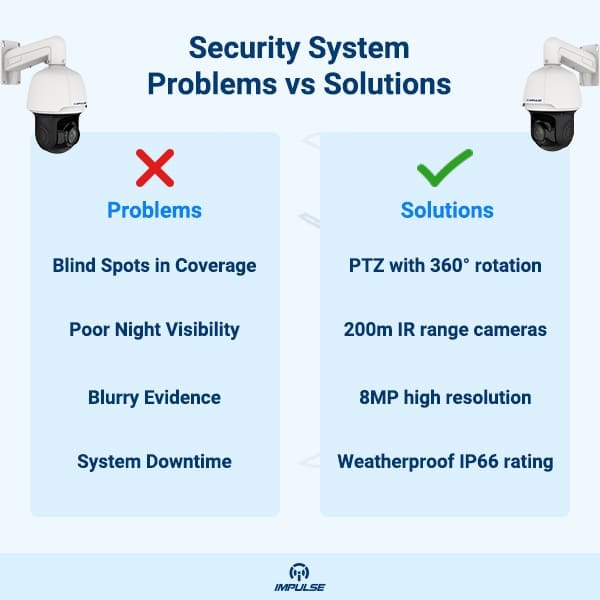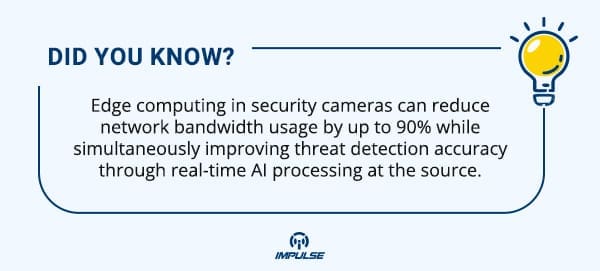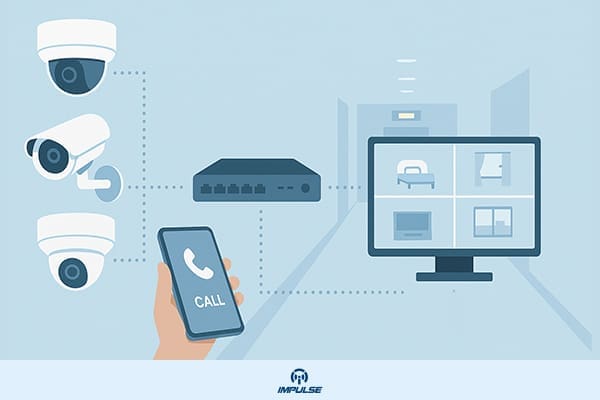In today’s rapidly evolving security landscape, businesses face unprecedented challenges in protecting their assets, personnel, and operations. Traditional security systems often fall short when organizations need to expand their coverage or integrate advanced technologies. Physical threats continue to evolve in complexity and scope, while digital vulnerabilities create new avenues for security breaches. Additionally, organizations must balance comprehensive protection with operational efficiency and budget constraints.
The solution lies in designing a scalable security system that can grow with your business needs while maintaining optimal performance and cost-effectiveness. These adaptive systems allow for seamless expansion, technology integration, and feature enhancement without requiring complete infrastructure replacement. By implementing a forward-thinking security architecture from the beginning, organizations can realize significant long-term cost savings while ensuring their security capabilities remain robust in the face of emerging threats.

The Critical Need for Scalable Security Solutions
Modern enterprises require security systems that can adapt to changing requirements without complete infrastructure overhauls. Whether you’re securing a small retail store or a multi-location corporate facility, your IP camera system must accommodate future expansion, technology upgrades, and evolving security threats.
The consequences of inadequate security planning extend beyond immediate financial losses. Poor scalability leads to system redundancies, compatibility issues, and exponentially increasing maintenance costs. Organizations that invest in properly designed network camera infrastructure from the outset position themselves for seamless growth and enhanced security capabilities.
Foundation Elements of Scalable Network Camera Systems
Network Architecture Planning
The backbone of any scalable security system is robust network infrastructure. Your network must handle current camera loads while accommodating future expansion without performance degradation. Consider bandwidth requirements, switch capacity, and Power over Ethernet (PoE) capabilities when designing your foundation.
Implement a hierarchical network design with core, distribution, and access layers. This approach ensures traffic flows efficiently and allows for targeted upgrades without system-wide disruptions. Managed switches with VLAN capabilities provide network segmentation, enhancing both security and performance.
Strategic Camera Placement and Coverage Analysis
Effective camera placement strategy begins with comprehensive site analysis. Identify critical areas requiring monitoring, potential blind spots, and environmental challenges. Consider lighting conditions, weather exposure, and physical security requirements for each location.

The Impulse Bullet Camera exemplifies advanced placement flexibility with its 8MP resolution and motorized lens with autofocus. Its IP66 and IK10 ratings ensure reliable operation in challenging environments, while the weatherproof RJ45 interface maintains connectivity integrity.
Technology Integration and Compatibility
Modern scalable CCTV systems require seamless integration between cameras, recording equipment, and management software. Prioritize ONVIF-compliant devices to ensure interoperability across different manufacturers and future technology additions.
The Impulse Network Bullet Camera (IMP-LX-BLTF-300-3600) demonstrates this principle with its 5MP resolution, quad stream capability, and comprehensive ONVIF compatibility. Its built-in edge analytics with motion detection reduces network bandwidth while providing intelligent monitoring capabilities.
Advanced Features for Future-Ready Systems
Intelligent Analytics and Edge Processing
Edge analytics represent the future of surveillance technology, processing data directly at the camera level rather than overwhelming central servers. This approach reduces bandwidth requirements, improves response times, and enables real-time decision-making.

The Impluse Motorized IR-Dome Camera incorporates advanced sensor technology with its 1/2.7 inch progressive scan CMOS, delivering 2592 × 1944 resolution at 25/30fps. Its 50-meter IR range ensures comprehensive coverage in challenging lighting conditions.
Flexible Storage Solutions
Scalable storage architecture must accommodate growing data volumes while maintaining accessibility and redundancy. Implement a tiered storage approach combining local recording, network-attached storage (NAS), and cloud backup solutions.
Consider video compression technologies like H.265+ to optimize storage efficiency without compromising image quality. The Impulse Network Dome Camera supports multiple streaming formats and SD card storage, providing local backup capabilities alongside network recording.
Remote Monitoring and Management
Centralized management platforms enable efficient monitoring of multiple locations from a single interface. These systems should support mobile access, automated alerts, and comprehensive reporting capabilities.
Implementing Advanced Camera Technologies
PTZ Capabilities for Dynamic Coverage
Pan-tilt-zoom (PTZ) cameras provide exceptional flexibility in scalable systems, offering wide-area coverage with detailed zoom capabilities. These cameras reduce the total number of fixed cameras required while providing interactive monitoring options.
The Impulse Network Camera showcases advanced PTZ functionality with 40X optical zoom, 200-meter IR range, and intelligent auto-tracking capabilities. Its preset and tour functions enable automated monitoring patterns, maximizing coverage efficiency.
Integration with Access Control and Alarms
Modern integrated security systems combine video surveillance with access control, alarm systems, and environmental monitoring. This convergence creates comprehensive security ecosystems that share data and coordinate responses.
Implement alarm integration capabilities that trigger camera recording, PTZ positioning, and notification systems based on security events. This coordinated approach maximizes the effectiveness of individual system components.
Cost-Effective Scaling Strategies
Phased Implementation Approach
Gradual system expansion allows organizations to spread costs over time while learning from initial deployments. Begin with critical areas and high-risk zones, then expand coverage based on operational experience and budget availability.
Design your initial infrastructure with excess capacity to accommodate future additions without major modifications. This forward-thinking approach reduces long-term costs and minimizes system disruptions.
Technology Refresh Planning
Future-proofing strategies should account for technology evolution and equipment lifecycle management. Plan for camera upgrades, software updates, and infrastructure improvements over a 5-7 year horizon.
Consider backward compatibility when selecting new equipment to protect existing investments while enabling advanced capabilities.
Best Practices for System Optimization
Performance Monitoring and Maintenance
- Proactive System Monitoring
- Implement automated health checks to identify potential issues early
- Set up bandwidth monitoring to optimize network performance
- Configure equipment status reporting for real-time awareness
- Regular Maintenance
- Schedule firmware updates to maintain system integrity
- Apply security patches promptly to address vulnerabilities
- Establish maintenance schedules that minimize operational disruptions
Training and Documentation
- Staff Development
- Provide comprehensive training programs for system operators
- Document system configurations and procedures thoroughly
- Create troubleshooting guides for consistent problem resolution
Conclusion
Designing a scalable security system using network cameras requires careful planning, strategic technology selection, and forward-thinking implementation approaches. By focusing on robust network infrastructure, intelligent camera placement, and advanced analytics capabilities, organizations can create security systems that evolve with their needs.
The key to success lies in balancing current requirements with future flexibility, ensuring your investment delivers long-term value and comprehensive protection. Modern IP camera technology offers unprecedented capabilities for creating intelligent, responsive, and cost-effective security solutions.
Transform your security infrastructure with Impulse’s advanced network camera solutions. Our expert team will help you design and implement a scalable system tailored to your specific requirements.


